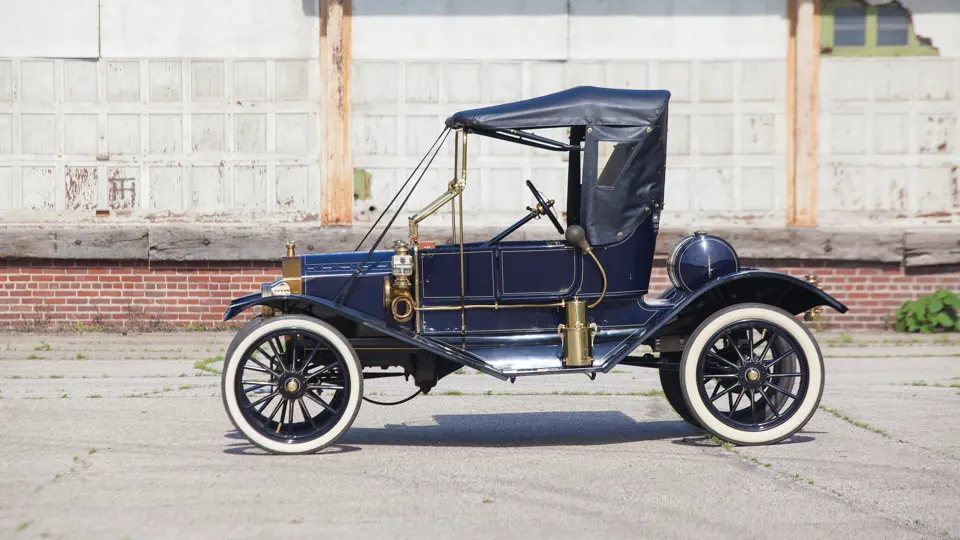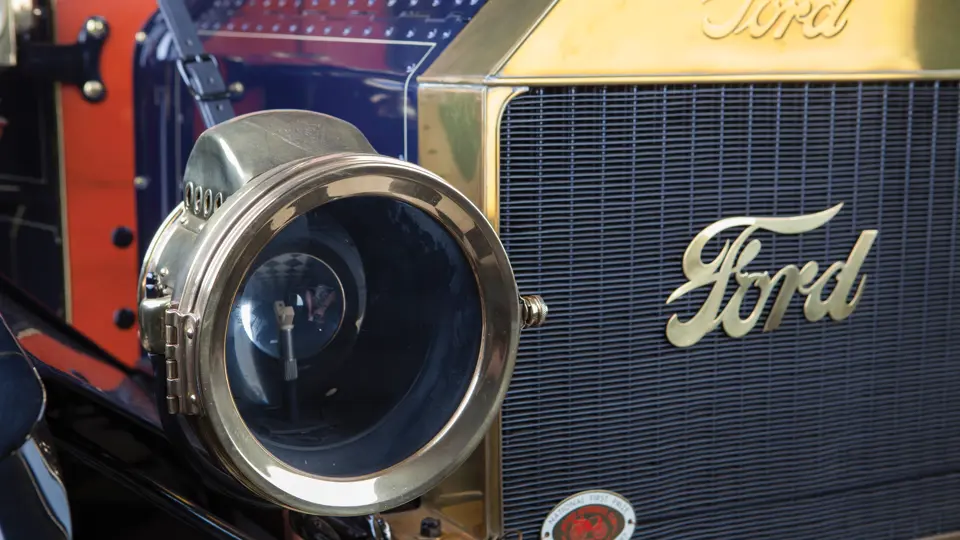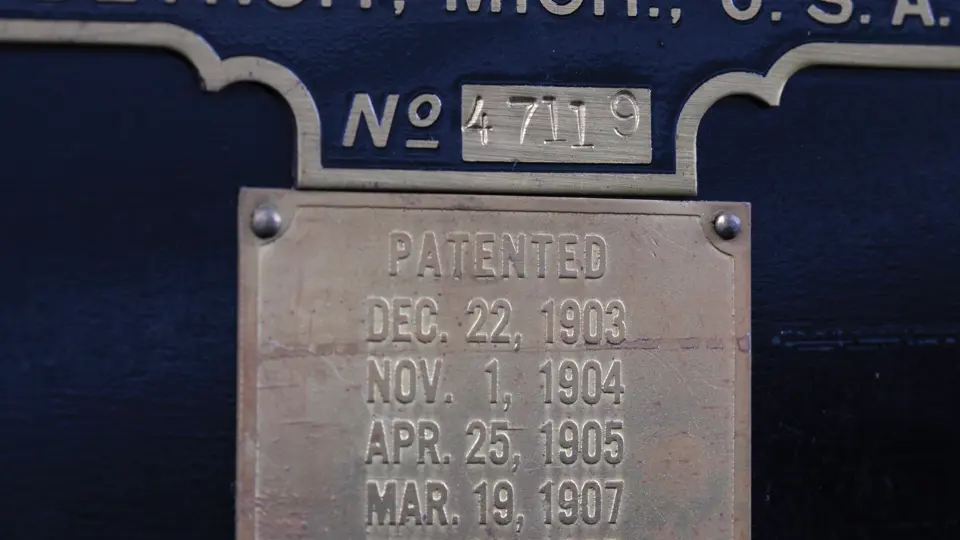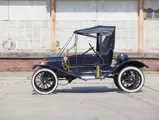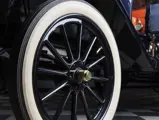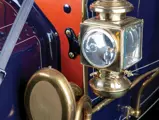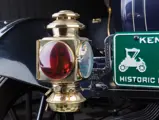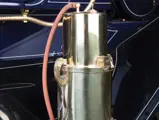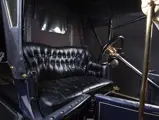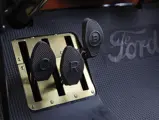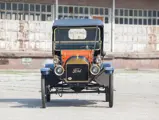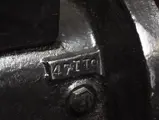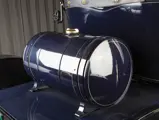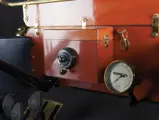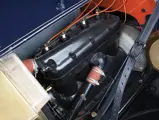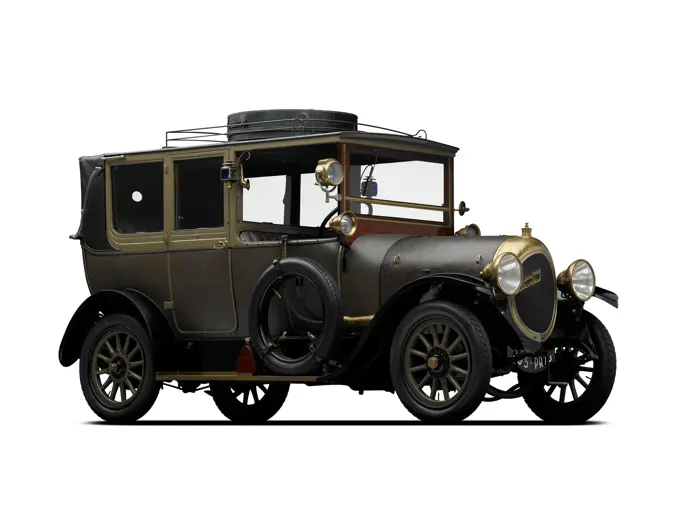20 bhp, 176.7 cu. in. four-cylinder inline L-head engine, two-speed planetary transmission, solid front axle and live rear axle with transverse semi-elliptic leaf springs, a transmission brake, and two-wheel mechanical drum brakes. Wheelbase: 100 in.
Ford restyled the Model T for 1911, giving it a new radiator, fenders, and wheels. Its body now used steel panels over a wood framework, as opposed to earlier all-wood construction. Whereas cars were previously offered in red, grey, or green, for 1911 dark blue was selected as a standard color (“any color as long as it’s black” still lay in the future).
Some body styles, like the coupe, were phased out, but two new ones were offered, the torpedo runabout and the open runabout. These two differed from the others by having curved fenders, a longer hood, lower seating, and a round 16-gallon fuel tank on the rear deck. The torpedo runabout had doors, while the open runabout did not. The late Les Henry, a renowned Model T historian, wrote that these runabouts “had undoubtedly the best performance and greatest speed of all Model T Fords ever produced.”
Mechanical changes were also applied to these Model Ts. A new rear axle with cast-iron center housing was introduced, and the front axle received new spindles. Most prominent was a mid-year change to the engine. Replacing the earlier exposed valves were new valve chambers cast into the block with steel doors, to enable adjustments when needed.
This Model T Runabout is the more desirable torpedo version, built with doors. It was restored by well-known collector Clyde Ensor Sr. in the 1970s and was purchased as a rolling chassis. Mr. Ensor acquired the necessary authentic parts to complete the restoration from such respected Model T sources as Arthur Howell and James Finney. After completion, in 1987, it was rewarded with an AACA National First Prize.
Ford had not adopted black as its “any color” in 1911, so this car is in the standard deep blue offered that year, with an attractive light grey pinstripe. It has the correct gas headlights with a running-board-mounted generator. The side lamps and taillight are kerosene-fueled Neverout units, with the latter mounted on a correct Neverout bracket, which carries the license plate. The black buttoned leather upholstery remains supple and unmarred, and a black pyramid-pattern rubber mat lines the floor. Instrumentation in the car consists solely of a brass Stewart speedometer.
As the car dates back to April 1911, it is one of the first with the closed-valve engine, and with its torpedo body style and highly authentic condition, it ranks with the most coveted of Model T Fords. This car has been lovingly cared for by the family for more than 40 years, and it runs well and presents proudly.




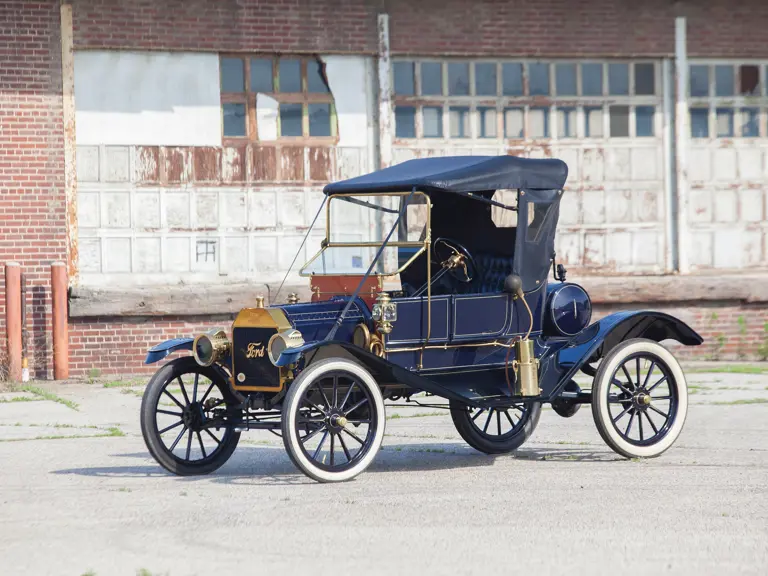

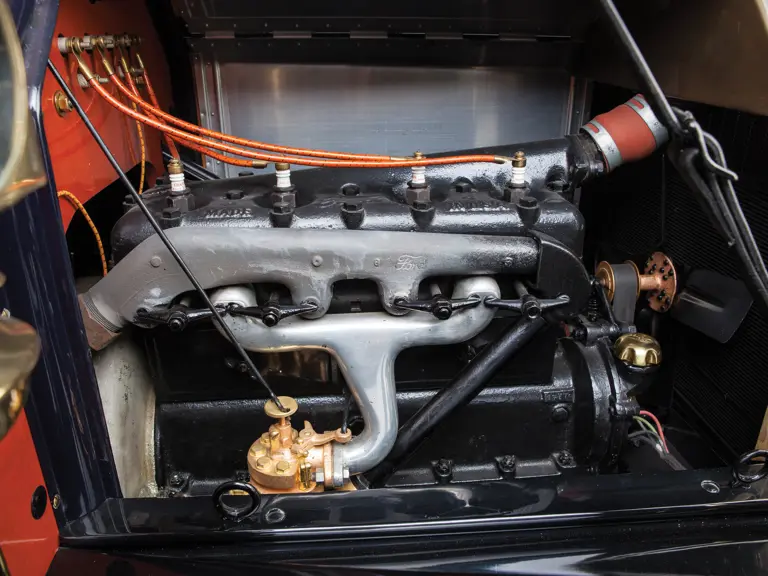

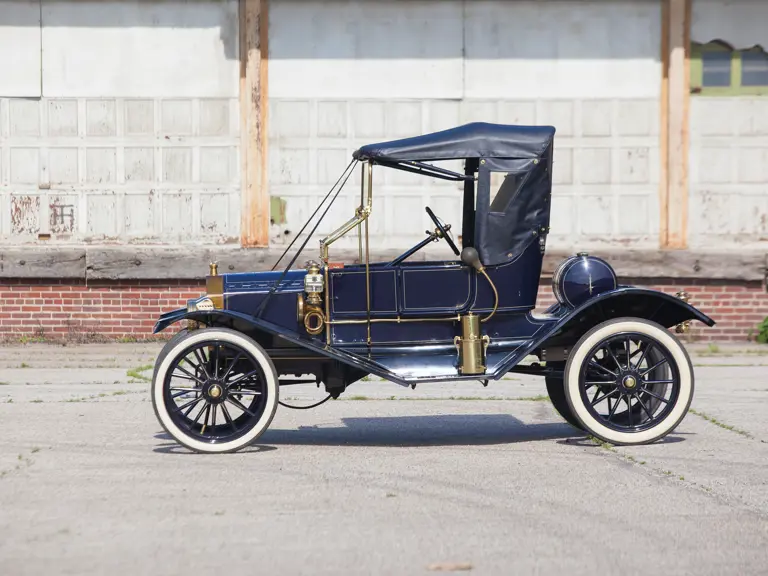
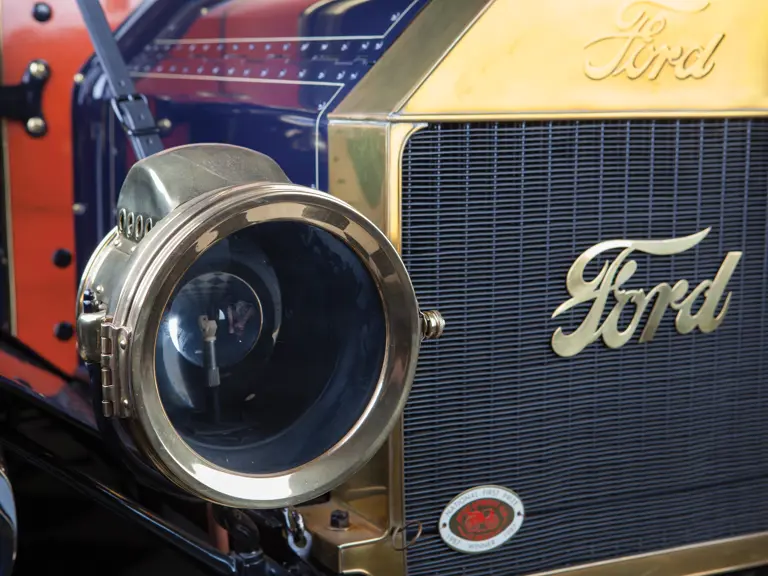
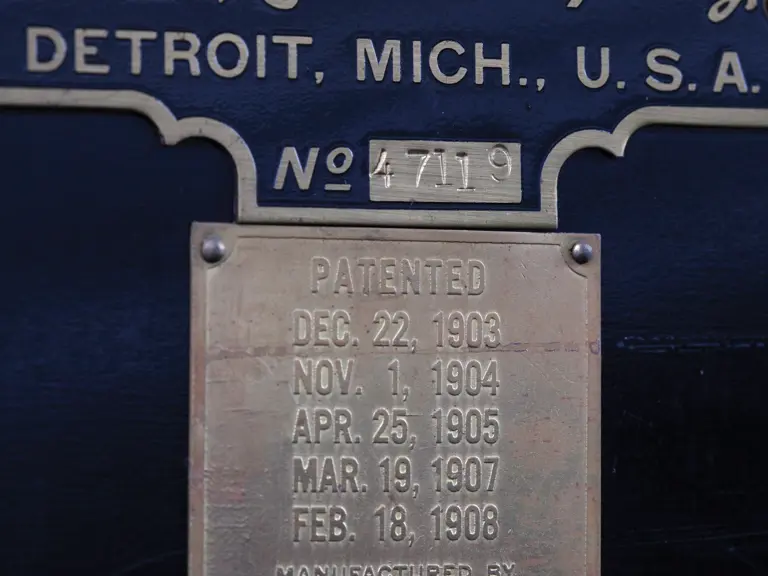
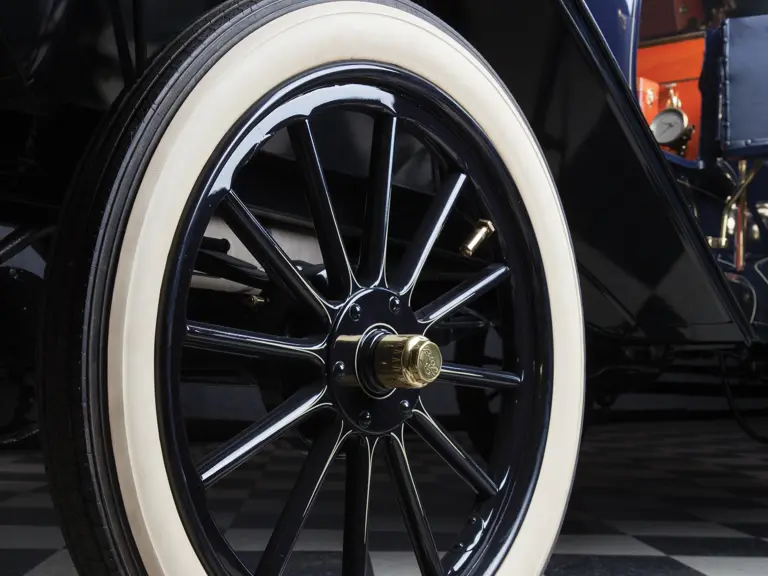
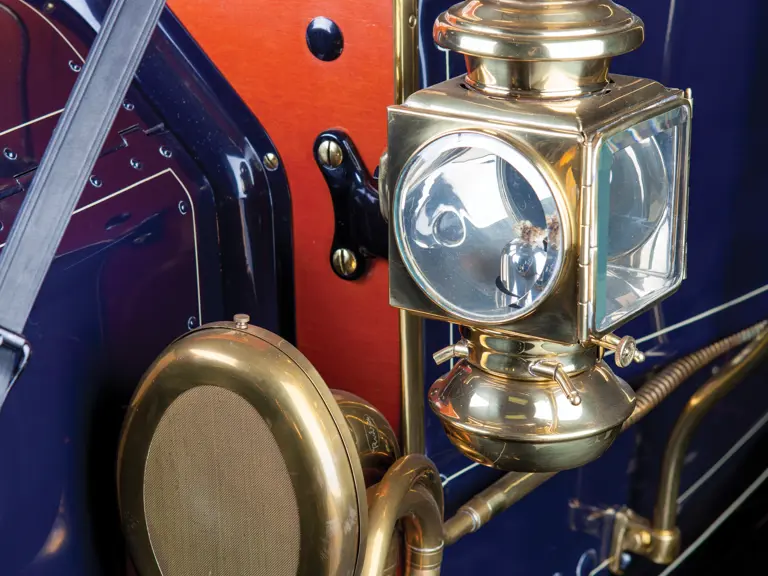
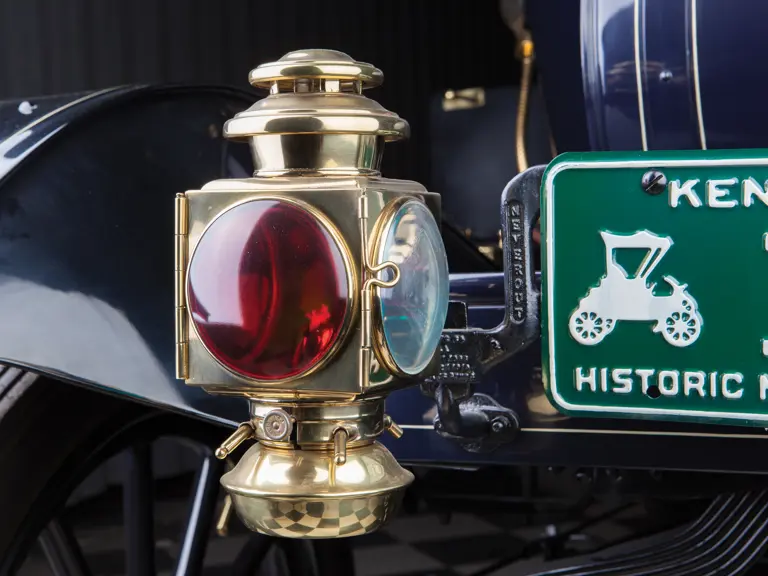
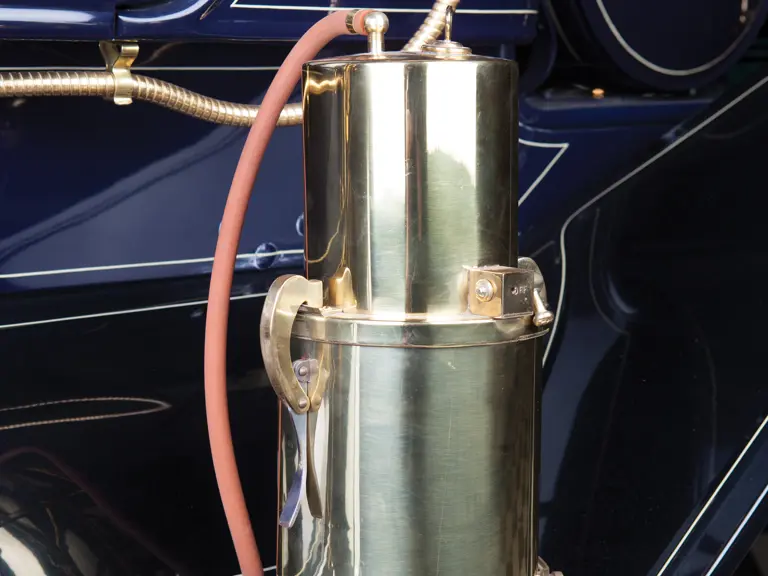
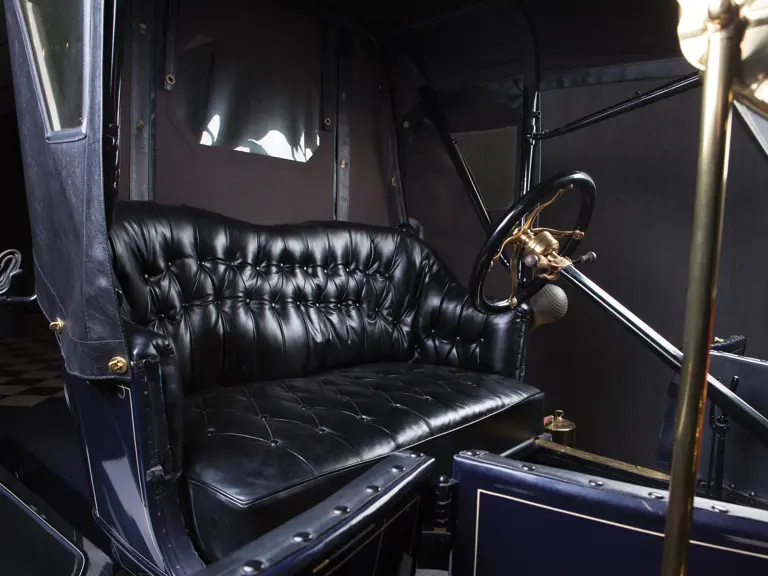
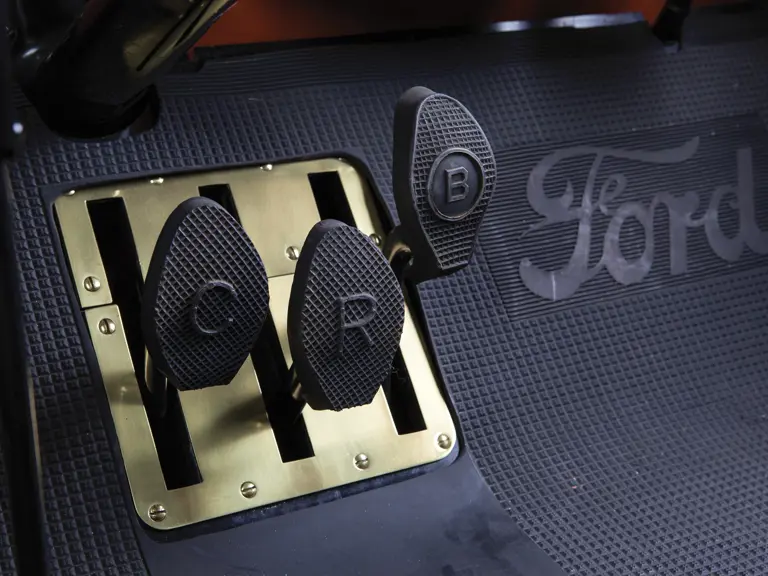
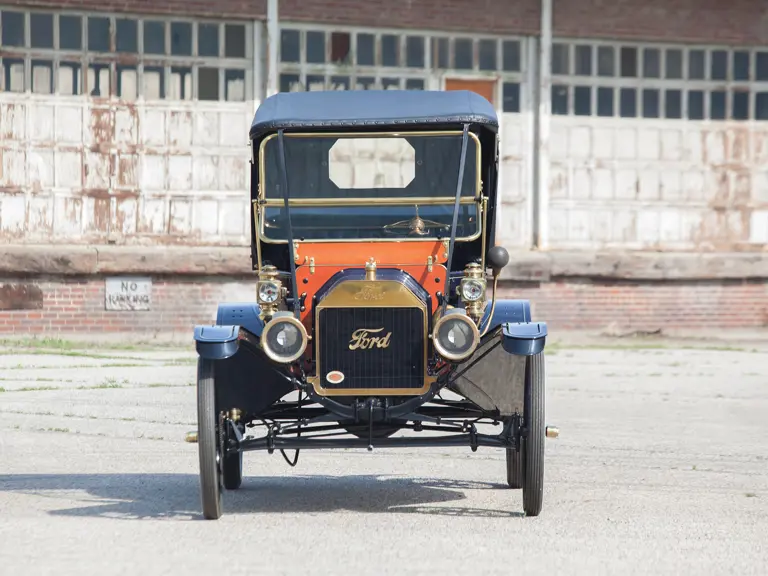
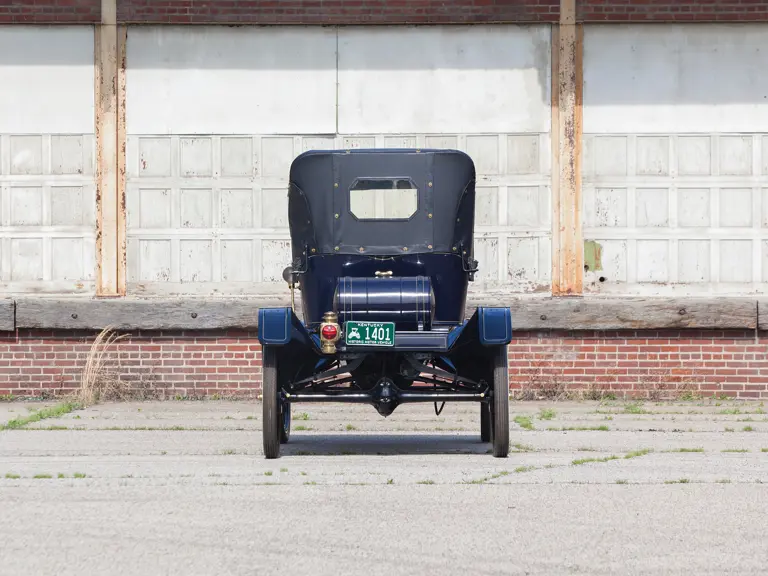
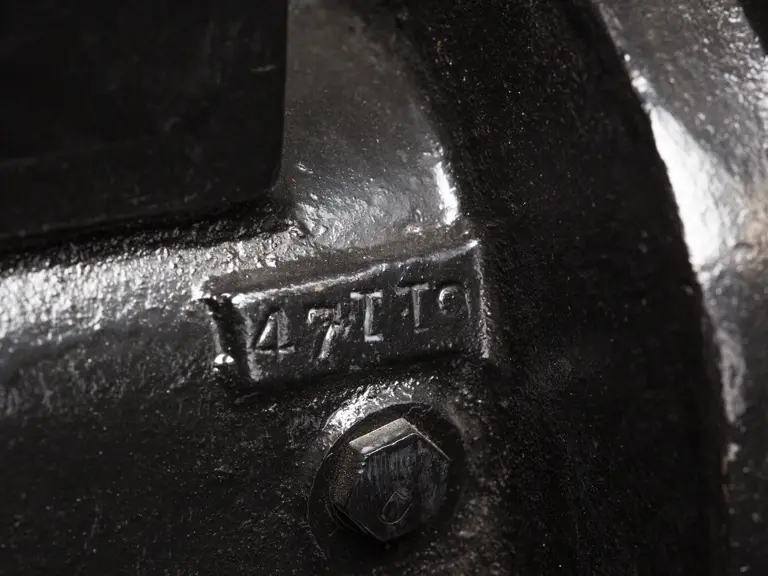
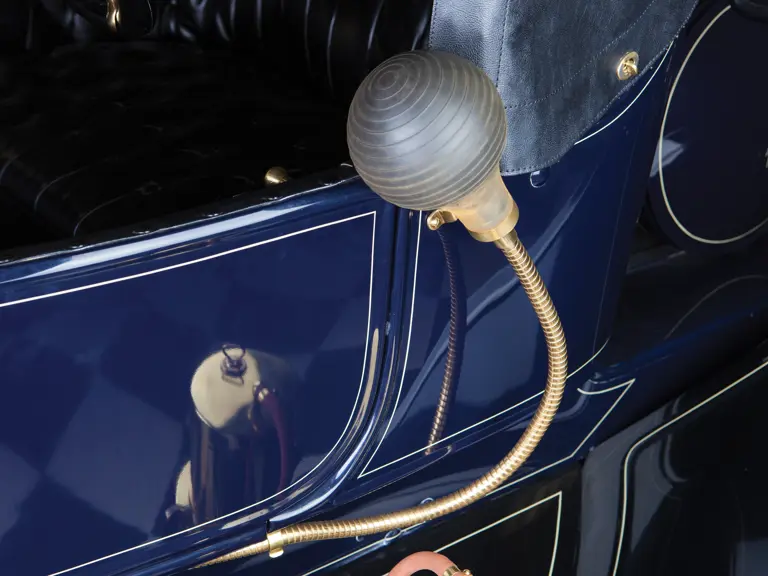

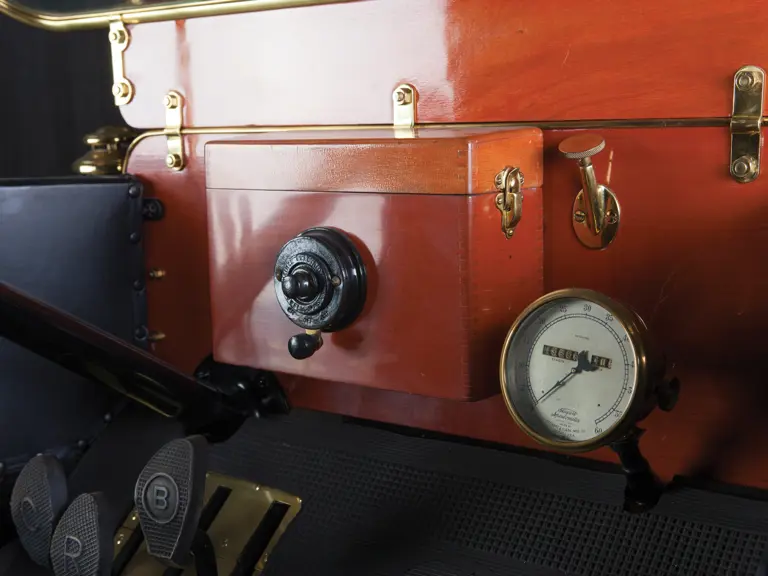
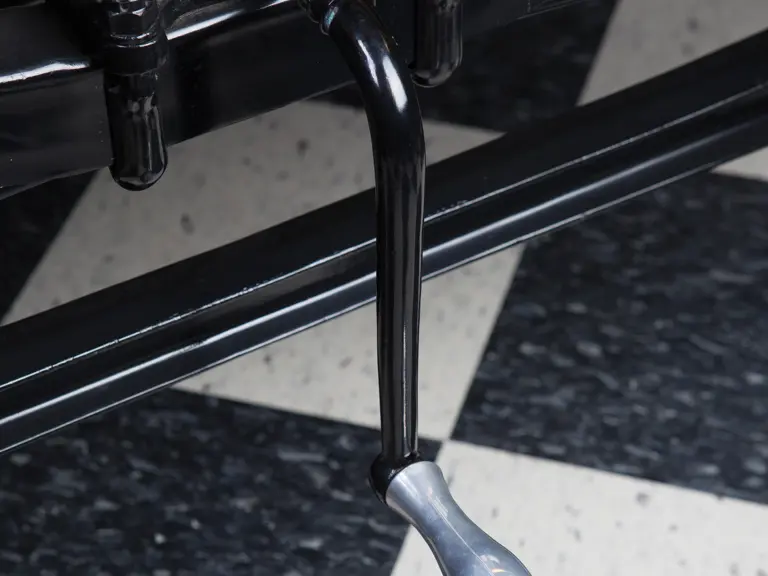
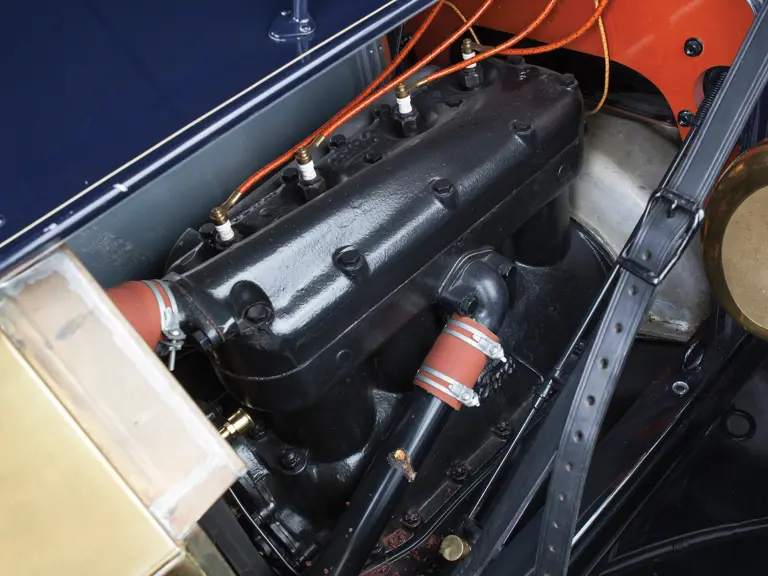
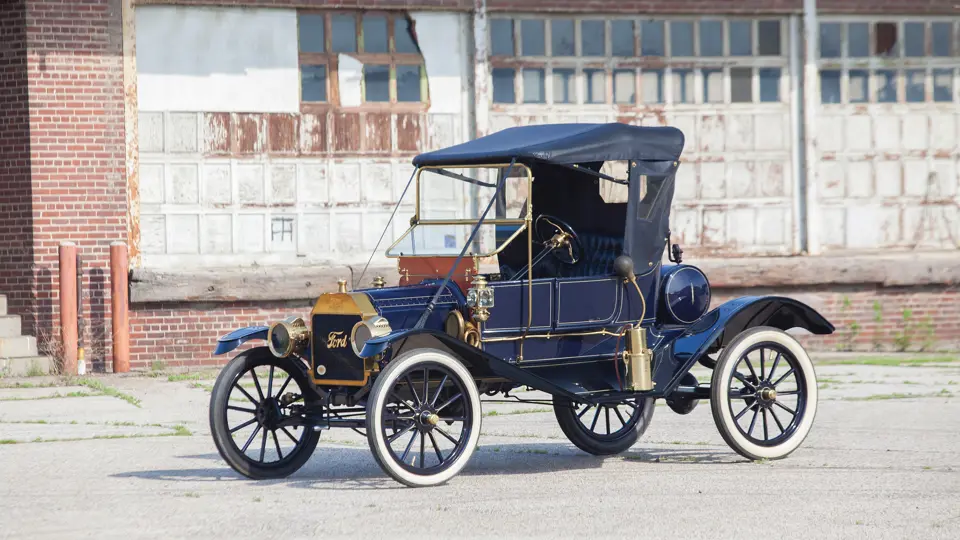
 | Plymouth, Michigan
| Plymouth, Michigan
